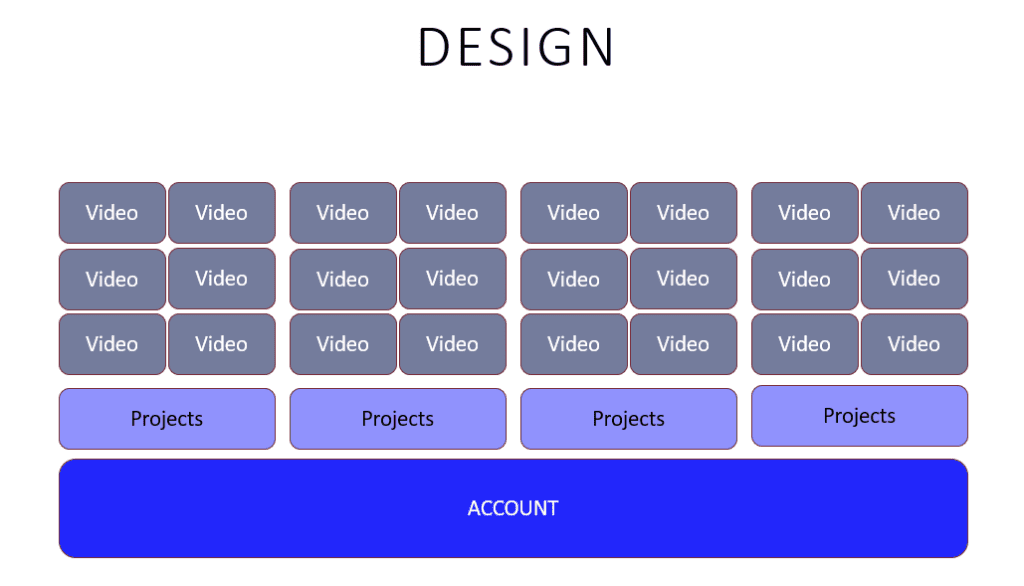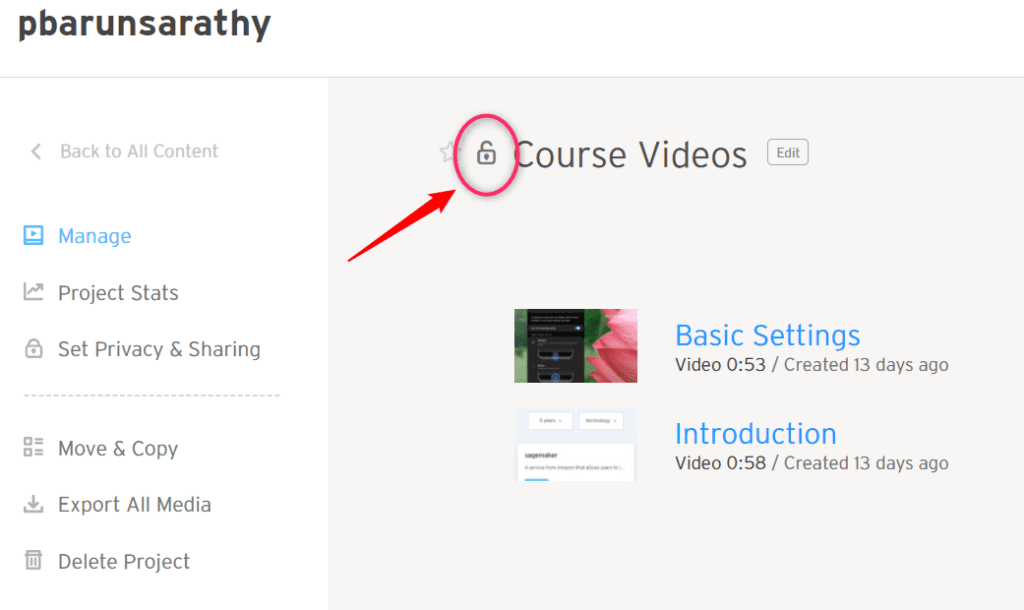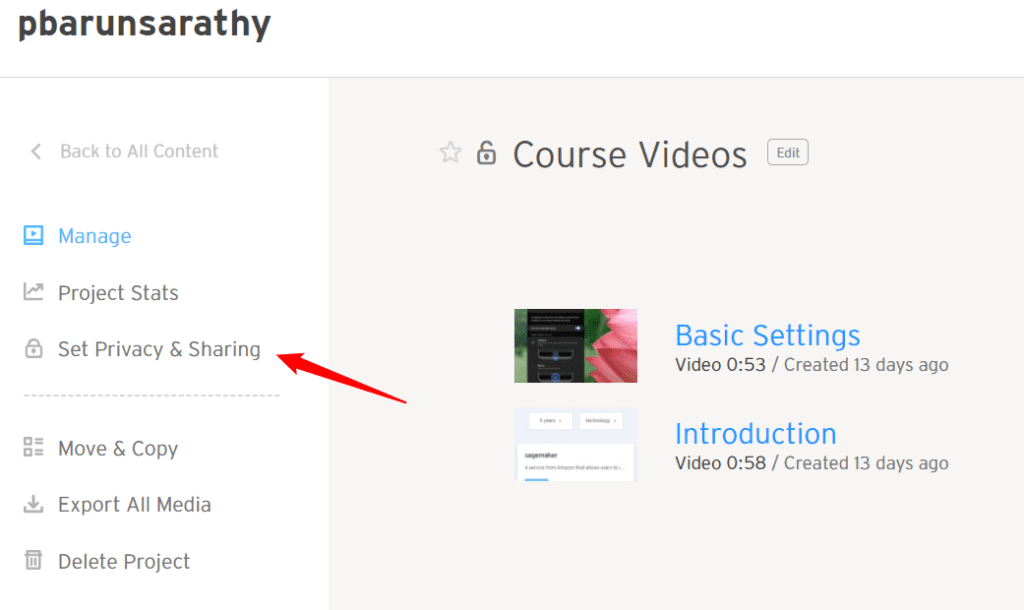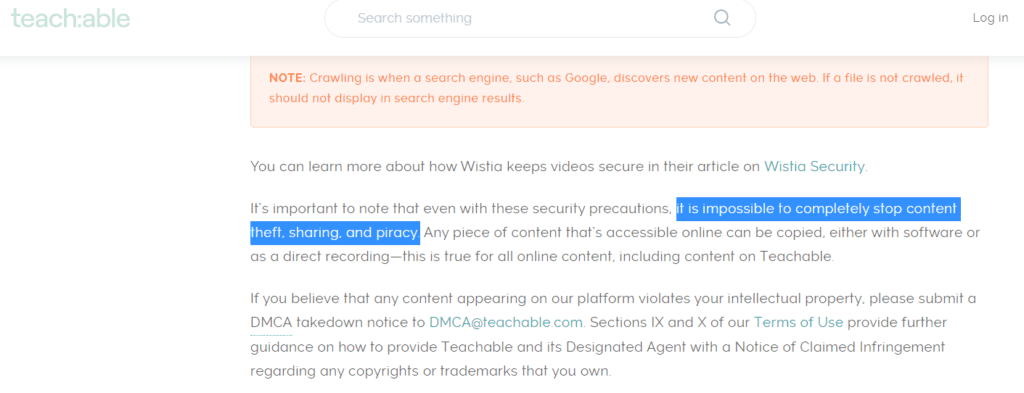Let’s say you create online courses and sell them as part of your business. You might be facing two different kinds of people.
- Your genuine paying students, and
- Content pirates.
In this detailed blog post, we’ll see a few steps on tightening the security of your online video course content that you may have hosted using course platforms such as Thinkific, Teachable, or Kajabi.
Or it could be even directly hosted on your Wistia account which you would embed into your WordPress websites.
Let’s get started.
If you prefer not to read, but “watch” this guide in the form of a video, here’s a playlist with 3 videos that takes overall ~18 minutes approximately to fully watch.
We have 3 parts to this video series and in the 1st part we’ll see:
- Steps to secure videos hosted directly on Wistia, and How to protect videos within your WordPress dashboard using plugins,
- and in the 2nd part, we’ll explore options we have to secure videos hosted on Teachable, Thinkific, and Kajabi course platforms.
- and in the last part, we’ll go over some best practices to follow, right at the time of creating video content itself. We’ll also talk about some limitations about this approach, and when to stop worrying about this entire problem. On the other hand, in this part we’ll also see some references and links to tools to complex procedures like creating .bif files, to protect your videos from being downloaded.
Alright, so here’s how to tighten the security around your videos hosted directly on Wistia.
Wistia has its Account, Projects, and then the course videos within the projects.

First, at the account level – let’s verify the embeddable options across domains. To check that setting, go to Account – Settings – Account, then scroll down to check the Domain Restriction settings. If you disable this, you can control on which domains the video can be embedded.


Next, after you are inside your Wistia dashboard, click on your Project.
By default, your project will be unlocked. Which means, anyone with that link can access your videos within that project.
You can also see that it’s not locked by seeing this icon.

Click on this padlock icon to bring up the Privacy & Sharing settings popup.
And toggle this button to lock it.

You can also get to this by clicking on this ‘Set Privacy & Sharing’ link.

This is a project level setting. Since all your course videos may stay inside your project, it’s important to provide this project-level security before protecting your individual videos.
Next, get into your individual videos where we can add a couple more security settings to them.
- Sharing option settings: go to customize, Share, uncheck all the sharing options, to remove the embed option for end users altogether. Or better, turn the ‘Sharing’ off.


Keep in mind, you can still embed on your own website by clicking on this Embed & Share button.

2. Password settings: within the same customize options menu, choose Password and provide a password to view the video. Although, it may annoy your users experience with this setting, it definitely helps limit the spread of your videos disallowing users to watch your content until a password is entered which you can share in an email with your student as soon as your course is purchased. A nominal feature, but it helps a step further in protecting content if you are keen about it.
So, those were the extra two settings to limit abusing the videos within Wistia account.
The assumption here is that since we are using Wistia directly to host our video content, we will be using another destination such as our WordPress website to embed our Wistia videos.
So, let’s also see how to secure our landing pages in our WordPress website, where Wistia videos are embedded. Basically, one can get to the embed URLs hashed id by visiting a website’s source code by either inspecting element or going through the Developer Tools.
Watch these videos on how people could get to the embedded videos:
In this series, we’ll see how one can get to embedded videos using Developer Tools in Google Chrome browser. This playlist also shows how to download Wistia Videos, how to download Vimeo videos, and finally how to download Facebook videos. These are all done directly in the browser on a PC (or Mac) and doesn’t need any external or 3rd party software.
Don’t miss to check them out so you are aware on how anyone could get access to your video content.
Just remember that someone without the login credentials to your paid course, cannot access your paid content – unless you have made the content freely available on the internet.
Although I have clearly mentioned in my videos to respect copyright policies, and not to misuse it for illegal gains, I still had to create this video series to combat this problem – not fully, but at least to the best extent possible.
Here are a few wordpress plugins that can help us block such browser level access to the iframe or embed URLs, disable right click options, disable inspecting element options, etc.
If you want to learn how to protect with similar settings but inside a Blogger blog, then check my article here which talks about how to disable text selection, disable right clicking on the page, disable viewing page source, and disabling dev tools – you can also get an all-in-one code block from this page here:
As a bonus, here’s a tool you might want to consider: https://www.vdocipher.com/
it’s called VDOCipher – which offers more solid protection. For beginners it’s a bit pricey though, in my opinion . And I have not used this personally but their offerings and overall reviews sounds promising. Do give that a try to protect your course videos.
Before I move on, I just wanted to highlight an important point:
I have come across some crazy loopholes in websites and blogs’ sitemap to be specific, through which lead magnets, and digital downloads could be easily downloaded ALL without the knowledge of the website owners, without paying, without signing up to mailing list or anything.
I reached out to MANY bloggers in the last few years, helped them and showed the loophole in their websites (I still do) and how they should protect themselves from content pirates. I have even written a book about it some 4 years ago – which is still valid to this day.
FWIW, I also wrote a post on Quora on how to spot spam websites.
https://www.quora.com/Is-a-digital-profit-course-fake-or-a-scam/answer/Arun-Sarathy-5
Why am I saying this now: just to tell you that I take this seriously, and that’s why I had to share this information on safeguarding the hard work by creators like you.
Next, we’ll discuss some possible methods to make the illegal accessing tough enough on popular online course platforms like Teachable, Thinkific, and Kajabi.
What’s common in all of them? – they all use Wistia as we can see from their respective help and support articles.
Teachable - https://support.teachable.com/hc/en-us/articles/360051987952
Thinkific - https://support.thinkific.com/hc/en-us/articles/360030741413-Video-Library-Upload-and-Manage-Videos
Kajabi - https://help.kajabi.com/hc/en-us/articles/360051863654-Does-Kajabi-Host-My-Video-Content-Let’s see what Teachable has to say about security.

Here they mention that even with these security precautions, it is impossible to completely stop content theft, sharing, and piracy.
Although with Teachable, there is no further option available to my knowledge, they do tell us that we can send a DMCA takedown notice if we believe that any content violates our Intellectual Property rights, and so they provide some guidance around how to do it.
This requires some work, but chances are more that it can positively work in your favor to takedown the pirated content. Sometimes it might feel like chasing two rabbits on a new moon night, but let’s not leave any stone unturned. So do your bit and submit the DMCA notice if you find your content stolen and sold on some other website.
Next, let’s see what does Thinkific has to say about limiting or discouraging content sharing: This article will cover what settings they have in place and some recommendations to prevent sharing. I have provided these links in the description below, so please do check them out.
https://support.thinkific.com/hc/en-us/articles/360030721673
But what if students share logins with their friends and thus cost you that missed customer value? Thinkific provides a way to combat that issue as well. These are quite task-bound, but if you are really keen in these security procedures then it’s time worth spending looking into these methods.
https://support.thinkific.com/hc/en-us/articles/360030736913-Can-I-prevent-students-from-sharing-logins-
A point to note here is that I am not being sponsored by any of these course platforms and these are all my independent tests that I am running and the experiments I am going through to see which course platform is more suitable for video security.
Lastly, speaking of Kajabi, it’s a beast and offers a ton of tools that are beyond what a normal online instructor needs. You get websites, payments system, products shop, email automation and so much more.
Coming to videos security, there aren’t great options available at the outset.
Although, their platform is quite robust with strong security around their login credentials and the entire workflow design around customer-student relationship and overall onboarding process, their video security is left with Wistia’s video hosting to take care of.
And I tested this by checking the available settings in my Kajabi Growth account. We do have the option to control the domain connected to our Kajabi account, something similar to what we saw within Wistia itself in the first part.
However, I didn’t find any access level settings that can be implemented for videos that we add directly to the Kajabi course pages. To summarize, to each his or her own.
In my tests, since Wistia is the common platform used as video hosting by these three course platforms (and also many other course platforms out there) – only Thinkific offers some granular-level details and options, as we saw earlier, when it comes to controlling and analyzing unauthorized downloading or sharing of video content we create. And we didn’t find anything close within Teachable and Kajabi.
Again, as I said, to each his own because some might like the different tools offered by Kajabi and some may love the look and feel that Teachable has, but if your only concern is around securing your video content within your online course modules – then Thinkific would be my choice.
Next, let’s talk about the mindset that might help, to have to face these situations. I have learned that from my mentors, and just wanted to share it with you here.
We all know that – there is no Good news or bad news but only the thinking makes it so. I have both good news and a bad news for you and it depends on which angle you see it from – So, I will leave the choice to you:
- News # 1 – People will steal your content, and we cannot stop that completely. We can only appeal to their common sense, dignity, and self-respect by expressly forbidding the shop-lifting of your videos without permission, in your terms of use page, copyrights page and other legal-talk documents. The reason protection doesn’t work 100% is because, at a minimum, your end-user, THE VIEWER can use their phones to record their computer screen or use a screen recording software, or take screenshots, or any other tool to get the content – so it’s worth repeating here – that no protection setting is going to work 100%. Please remember that. As soon as we upload something to the internet, we must remember that if someone wants to get hold of the content, they will get to it somehow. That’s the big trade-off on the internet.
- News # 2 – There is no way for anyone to gain access to your course without purchasing it from you. A vast majority of the People out there are decent and honorable, they are the ones who would love to learn from you, enrol into your courses as students and might as well have already paid you for what you have offered. My main aim to make this video series is to help educate creators and also as a reminder for myself, to safeguard our hard work to the best extent possible, and know when to stop obsessing over this – so as to have the right mindset when it comes to creating premium content to SERVE our audience and to SHARE OUR KNOWLEDGE with others. And THAT should be where our primary focus should be.
So please don’t worry and fret over the 100% content protection and that just makes us lose sleep over the actions of a few percentage of people, when there are millions of people who genuinely support and are eagerly waiting to learn from what you have to offer and teach. That’s the section of people, our supporters, fans, followers, tribes, on whom we want to focus more of our valuable time on.
However, just make sure you take care of the reasonable security settings we saw in these videso, so you would have at least taken a few steps to safeguard your creations and make it a little bit more harder for anyone to get indirect access who have not paid you.
But a point to reiterate here is that the course pages are never indexed by search engines. The content pages with videos are only ONLY available to your students who have enrolled AFTER paying you the course price you have set.
So, when we speak of providing value, that’s the mindset with which we are looking at this whole thing about online teaching. Providing value for money, regardless of the knowledge that we know someone somewhere is going to misuse our content.
Protecting your content with these techniques is similar to designing a Hurdles Race. Professional hackers can still surpass all these hurdles and will ultimately end up copying content from your websites.
Here are some best practices to always follow while creating content:
Watermark your videos with your logo, or show your face while talking and name on the screen. The name can stay for the entire duration of the video in a subtle way without disturbing the viewing experience. Add a visible link to your copyrights notice – so the possible future content pirates can at least see that warning on what they can expect if they choose to pirate your content.
Next, as we saw earlier, you could send a DMCA notice for taking the pirated content down.
Here’s a related great article from Thinkific that outlines 11 ways to protect your Intellectual Property in your Online Courses.
https://www.thinkific.com/blog/intellectual-property-online-courses/
I really liked the 10th and 11th points.
To quote from that blog post,
“…don’t hold back all of your knowledge and stop all of your millions of potential customers from hearing it, just so that a small handful of people can’t get it.”
“People can copy our words, our writing, our ideas and our services, but they can never BE us.”
“YOU are the biggest trademark of your IP, so although we need to keep half an eye open, don’t let the fear of your IP being copied be a barrier to you changing people’s lives.”
If you found some lines repetitive in this long and detailed guide post, especially about the creator’s mindset to upkeep, that’s intentional because it’s important and I wanted to purposely repeat so as to reinforce that.
To conclude, I highly recommend these resources which might help you.
- Please listen to this podcast episode as a reference where copyright infringement is discussed in detail with an attorney. It has rich content that discusses points such as “At what point your online content (such as a course) is copyrighted” and how to protect your online content with the digital millenium copyright act, and much more. https://www.smartpassiveincome.com/podcasts/copyright-infringement-and-dmca/
- Also, watch this video message by Marisa Murgatroyd, where she beautifully delivers a message on this very topic: https://www.youtube.com/watch?v=f4seBnQQMuQ
- If you want to hike it up a notch further, and go the legal way, here’s a video that gives some suggestions.
https://www.youtube.com/watch?v=RowIl39S_-w - I haven’t covered Vimeo settings in this guide. Check out this video that shows a setting for videos hosted on Vimeo:
https://www.youtube.com/watch?v=7Zk3meOcV_k - Finally, here’s a technical walkthrough of how to Protect Your WordPress Videos From Being Downloaded.
https://www.youtube.com/watch?v=bC-tZhlYH8o
I wish you all success with your video courses.
Keep creating because your victory is just around the corner.


